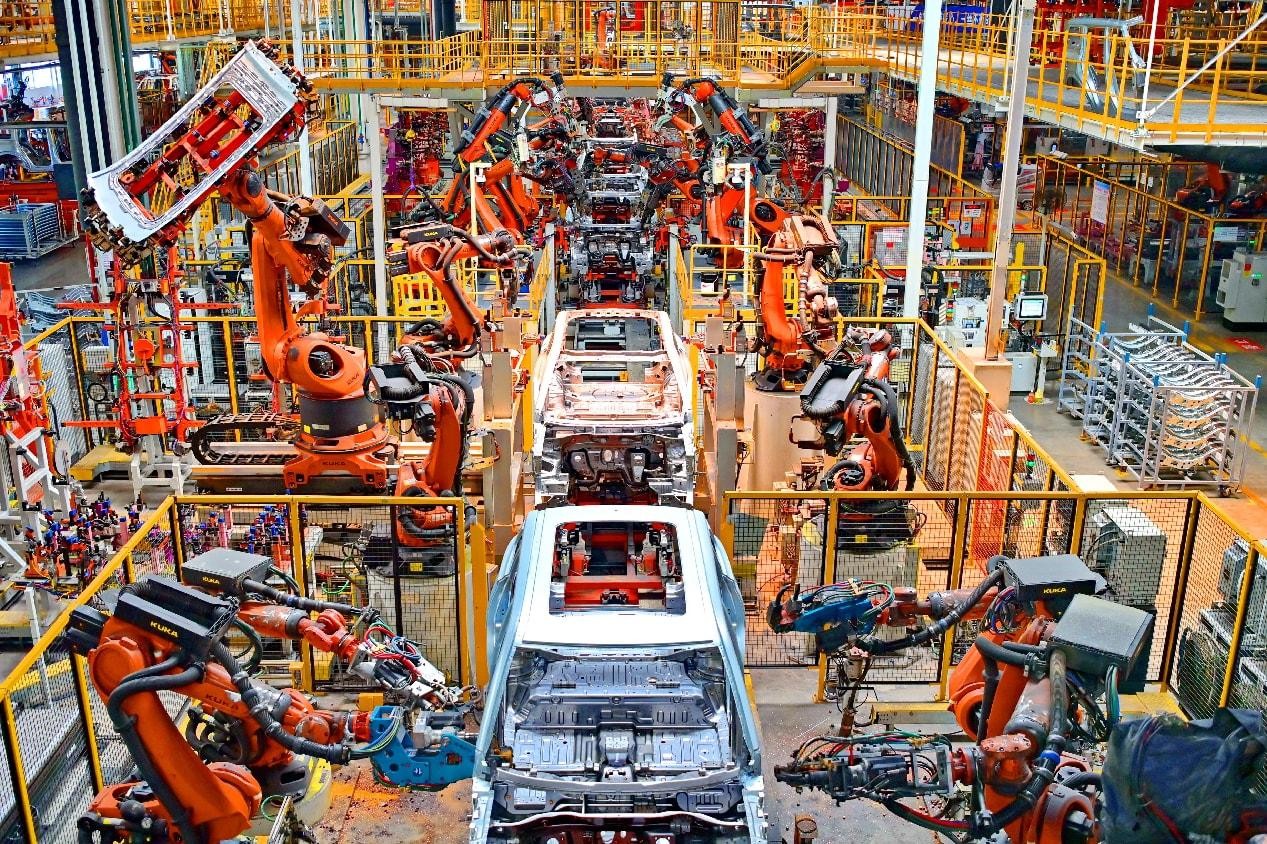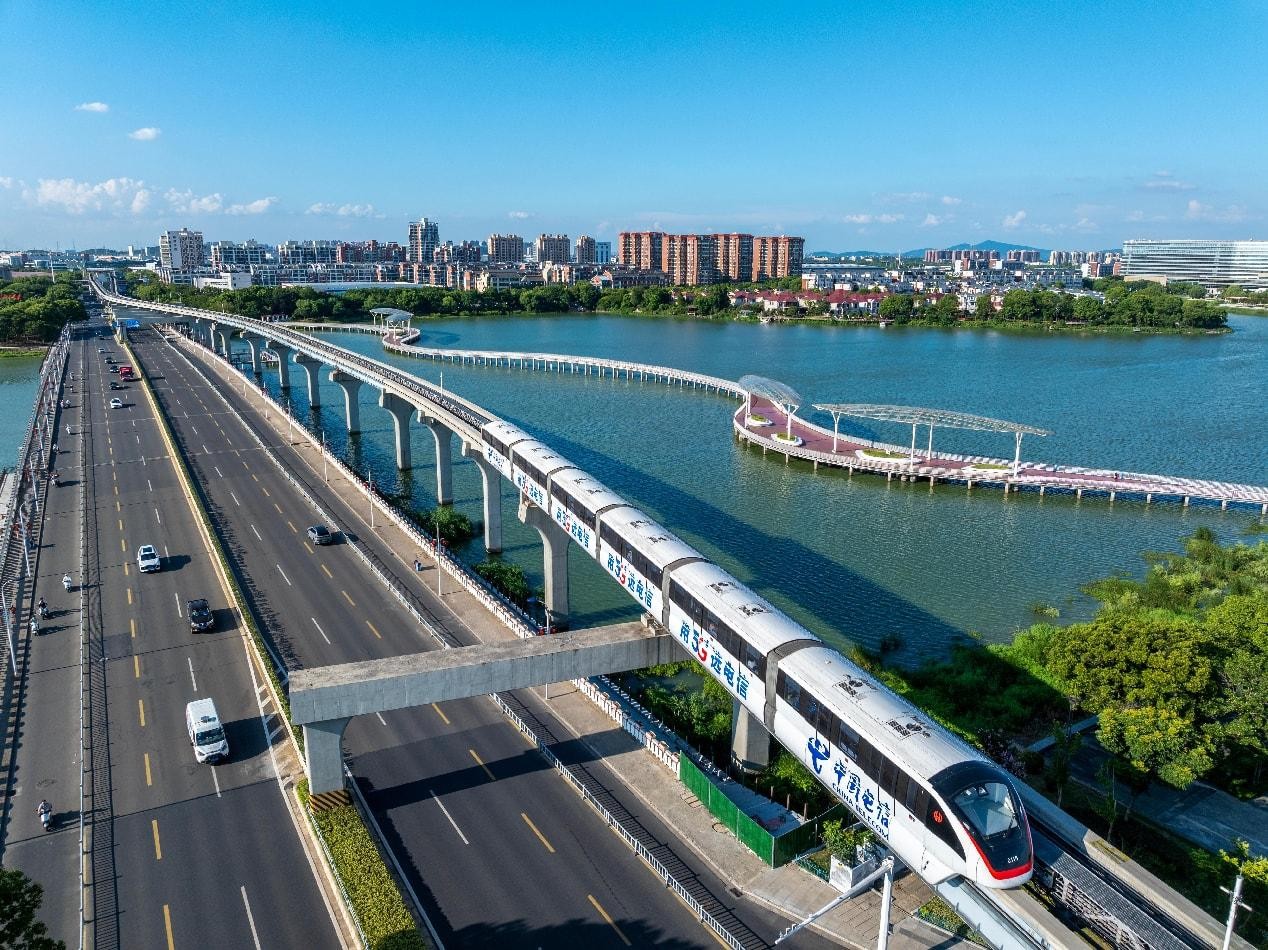




- BRNN
- BRI News
- BRNN News
- Database
Official Documents Polices and Regulations
Inter-government Documents International Cooperation BRI Countries
Business Guide Economic Data BRI Data
Trade
Investment Projects Latest projects
Cases - Content Pool

Robotic arms weld car frames inside a digital production workshop at an automotive manufacturer in Nanchang, east China's Jiangxi province. (Photo/Zhu Haipeng)
China's economy has demonstrated long-term stability and sustained growth, contributing certainty and positive momentum to the global economic landscape. Despite recent assertions that China's "golden age" of investment and development has passed, and that opportunities are diminishing, the reality is markedly different. China remains a market of immense potential. As the country accelerates its economic transformation and industrial upgrading, it will create unprecedented opportunities for global stakeholders.
Industrial transformation and upgrading
China's industrial sector continues to demonstrate remarkable vitality, underpinned by a comprehensive industrial system and unparalleled scale.
For 15 consecutive years, China has remained the world's largest manufacturing country, with 80 percent of capacity concentrated in traditional sectors such as metallurgy, chemicals, machinery, light industry, and textiles. As these industries advance toward more advanced, intelligent, and green development models, a wave of new investment opportunities is emerging.
Simultaneously, strategic emerging industries and growth drivers, such as AI, robotics, and biopharmaceuticals, are gaining momentum. Several Chinese AI models rank among the world's top performers, and China has been the world's largest industrial robot application market for 12 consecutive years. Innovation in pharmaceuticals is also experiencing a surge in innovation, with new drugs reaching the market at an accelerated pace. China's commitment to openness ensures that the benefits of industrial transformation are shared globally.
Sci-tech innovation and human capital
In 2024, China's total R&D expenditure exceeded 3.6 trillion yuan (about $500 billion), with R&D intensity approaching the average of OECD economies. The country ranks first globally in both high-level academic publications and invention patent filings. Scientific and technological advances are increasingly integrated into industrial applications, resulting in more diverse commercial use cases and a rising rate of patent commercialization. These developments are rapidly translating into new quality productive forces.
China also boasts one of the world's largest pools of high-level scientific and technological talent, producing more than 5 million STEM graduates annually. This growing talent base - particularly the so-called "engineer dividend" - is becoming a key force behind sustained innovation and industrial upgrading.
Expanding and upgrading consumption
With per capita GDP exceeding $13,000, China's consumer market is entering a critical phase of consumption upgrading. The dynamic interplay between evolving consumer demand and innovative supply is creating strong investment momentum.

Consumers buy electronic products in a shopping mall in Ningbo, east China's Zhejiang province. (Photo/Li Yue)
Commodity consumption continues to expand in both volume and quality. In 2025, China's total retail sales of consumer goods are expected to exceed 50 trillion yuan, reaffirming the country's position as the world's second-largest consumer market. The country has led global online retail sales for 12 consecutive years and ranks first globally in automobile and air-conditioner sales.
Service consumption is emerging as a new growth engine. In 2024, services accounted for 46.1 percent of household consumption expenditure, highlighting substantial potential for further expansion compared with developed economies.
Traditional and new infrastructure construction
China's vast geographic expanse continues to generate significant demand for infrastructure development, particularly to support balanced regional growth. Railway and highway densities in central and western regions remain well below those in the eastern coastal areas, indicating substantial potential for continued investment in traditional infrastructure with long-term economic and social returns.

An unmanned monorail train runs in Wuhu, east China's Anhui province. (Photo/Tao Haijin)
The development of intercity railways and cross-river or cross-sea bridges is vital for enhancing logistics efficiency and stimulating regional economies, representing substantial investment opportunities.
At the same time, China's rapid advances in new infrastructure, including digital networks, mobile communications, and smart city technologies, are opening up expansive and globally relevant market opportunities.
New-type urbanization and urban renewal
China's urbanization is transitioning from rapid expansion to a phase of stable, high-quality development. While growth has moderated, the process is gaining in depth and complexity.
Efforts are underway to enhance the quality of urbanization through improved spatial planning, accelerated development of city clusters and metropolitan areas, and the construction of modern, people-oriented cities. Concurrently, the city is advancing urban renewal projects to revitalize urban villages, upgrade aging residential communities, and modernize infrastructure such as flood control systems, disaster prevention networks, underground pipelines, and utility corridors. These initiatives aim to improve urban living standards while generating significant new investment opportunities across multiple sectors.
Ensuring and improving people's well-being
China's rising Human Development Index reflects steady growth in demand for services such as childcare, education, elderly care, and healthcare. These expanding needs are driving both social progress and economic opportunity.
By the end of 2025, China plans to offer 4.5 child care places for children under the age of three per 1,000 people. This represents notable improvement, though still below levels seen in developed economies. With over 300 million people aged 60 and above, China also faces gaps in the availability of elderly care beds, physicians, and nursing staff per thousand elderly individuals.
Meeting these essential needs will not only enhance quality of life but also generate substantial employment and investment opportunities across the healthcare and social services sectors.

Tel:86-10-65363107, 86-10-65368220, 86-10-65363106